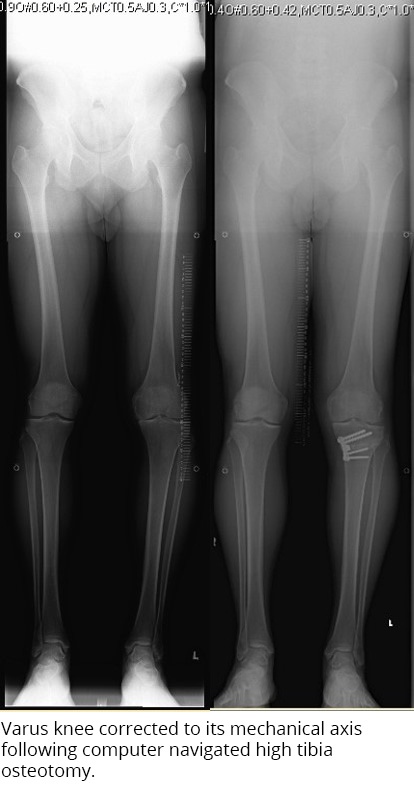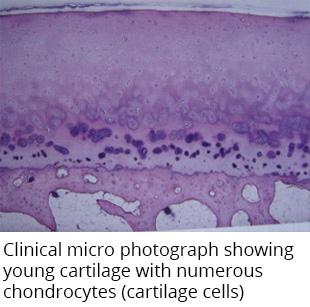
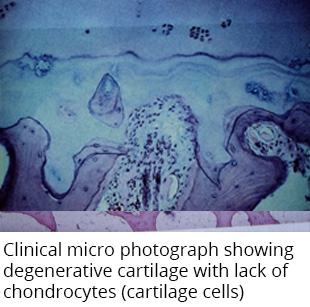 Articular cartilage is a very special structure. It consists of several layers which are medically called superficial zone, transitional zone, deep zone, calcified zone and subchondral zone. This layering effect facilitates in containment of fluid and matrix. One can visualise it as a specialized “sponge” which is able to take the shock absorber role when a person runs, jumps or utilises joints during movement of the limbs. With arthritis there is a progressive reduction in this function due to the loss of cartilage cells called chondrocytes. There is also a reduction in the matrix. Henceforth, the sponge function is lost and patients start to experience pain and limited mobility due to increase forces acting on the subchondral bone. There is no pain fibres located in the cartilage. All pain experienced is from the bone.
Articular cartilage is a very special structure. It consists of several layers which are medically called superficial zone, transitional zone, deep zone, calcified zone and subchondral zone. This layering effect facilitates in containment of fluid and matrix. One can visualise it as a specialized “sponge” which is able to take the shock absorber role when a person runs, jumps or utilises joints during movement of the limbs. With arthritis there is a progressive reduction in this function due to the loss of cartilage cells called chondrocytes. There is also a reduction in the matrix. Henceforth, the sponge function is lost and patients start to experience pain and limited mobility due to increase forces acting on the subchondral bone. There is no pain fibres located in the cartilage. All pain experienced is from the bone.
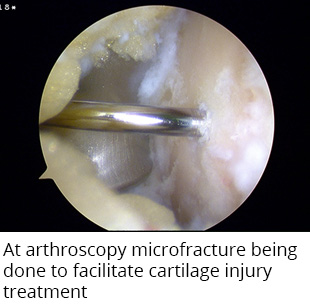 Radiographically the cartilage degeneration is graded by Kellgren Lawrence radiographic criteria the grade is from grade 0 to grade 4. In early osteoarthritis there is reduction of joint space and progressively in late osteoarthritis, grade 4 there is severe reduction of joint space with bony changes of subchondral sclerosis. The treatment of osteoarthritis and cartilage injuries involve reduction of pain, physiotherapy to optimise muscle strength and appropriate medical and surgical management.
Radiographically the cartilage degeneration is graded by Kellgren Lawrence radiographic criteria the grade is from grade 0 to grade 4. In early osteoarthritis there is reduction of joint space and progressively in late osteoarthritis, grade 4 there is severe reduction of joint space with bony changes of subchondral sclerosis. The treatment of osteoarthritis and cartilage injuries involve reduction of pain, physiotherapy to optimise muscle strength and appropriate medical and surgical management.
Intra-articular injection of hyaluronic acid known as viscosupplementation is a well established treatment modality for early to moderate osteoarthritis.
Viscosupplementation aims to reduce the pain, lubricate the joint and can sometimes stimulate the hyaluronic acid in the joint. This mechanism by the viscosupplementation helps to maintain the joint environment by stabilising and protecting the joint as well as reducing the sensitivity of the pain receptors. Osteoarthritis management using hyaluronic acid is indicated when such patient has failed to respond adequately to conservative non-pharmacological therapy as well as simple medication.
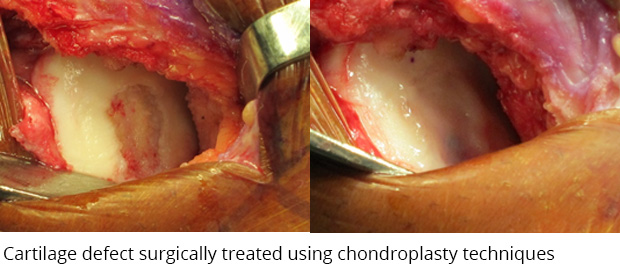 There are different drugs used for viscosupplementation. Based on the patient symptoms, presentation and clinical data the clinician will discuss with the patient on the suitable injection for the patient.
There are different drugs used for viscosupplementation. Based on the patient symptoms, presentation and clinical data the clinician will discuss with the patient on the suitable injection for the patient.
When cartilage injuries are not amendable to such treatments they are usually due to full thickness cartilage defects. Patients present with pain and locking. In large defects these patients need to undergo surgical management.
Surgical management involves accessing the cartilage defect size and patient’s level of activity. In large defects cartilage scaffolds are utilised after marrow stimulation has been done using micro fracture.
When patients have severe malalignment, they will need correction of the malalignment using osteotomy. Dr Sathappan uses computer navigated high tibia osteotomy to correct the knee malalignment. Following which the cartilage effect is also addressed by scaffolds to improve the overall outcome of the patient. With good therapy and surgical techniques, the patient can be expected to rehabilitate to most sporting activities.
